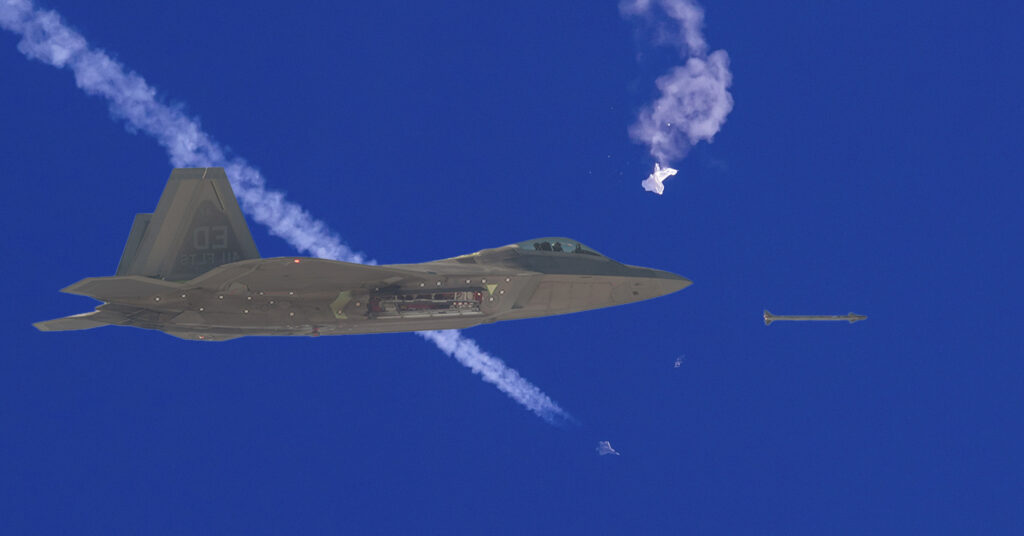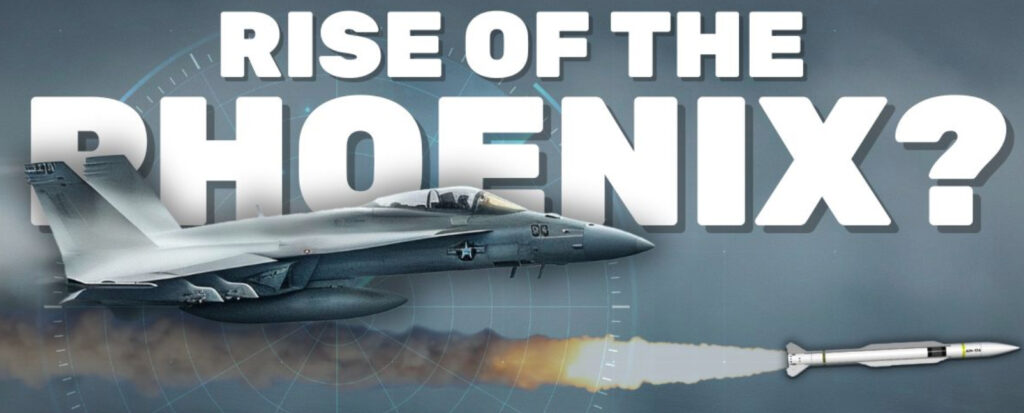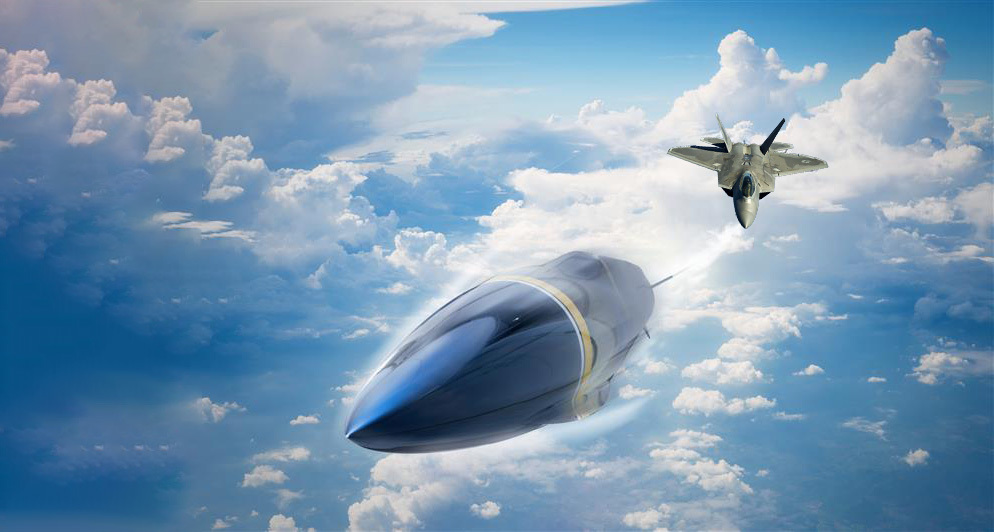When Americans talk about air-to-air missiles launched at targets like drones or balloons, they tend to think in terms of cost – often calculated as the cost of the missile versus the cost or nature of the target. But the truth is, missiles aren’t investments, they’re perishable goods. Like a gallon of milk in your refrigerator, you can only keep these systems on the shelf for so long before they go bad.
On February 4, an F-22 Raptor was scrambled to intercept and shoot down a Chinese surveillance balloon that had drawn the world’s attention as it drifted over the mainland United States in the days prior. With the balloon safely over the open ocean off the coast of South Carolina, the Raptor pilot engaged the slow-moving target with an AIM-9X Sidewinder missile – the latest iteration of the famed air-to-air weapon that comes with a hefty price tag of some $472,000 per unit.
The shootdown, which was the air superiority-focused Raptor’s first ever, immediately became the subject of significant media and political backlash, however, as Americans questioned the sanity of using a half-million-dollar air combat missile to take down a target that was over 200 feet tall and moving at a crawling pace.
Why use a pricey missile to take down a balloon in the first place?
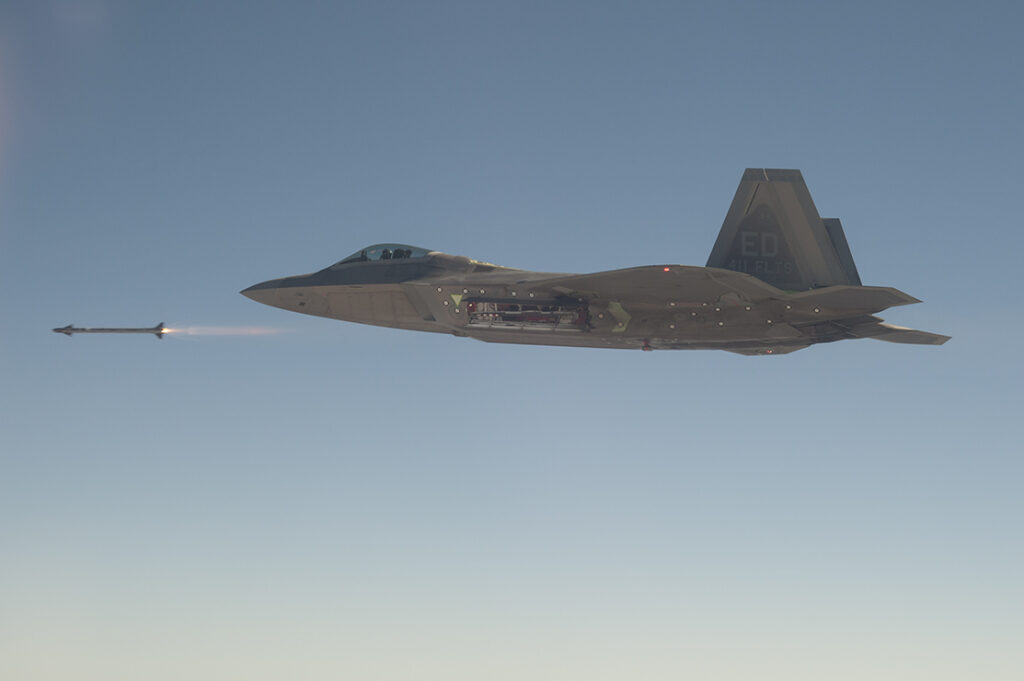
While some wondered why the F-22 didn’t just use its onboard 20mm M61V2 Vulcan rotary cannon to make Swiss cheese out of the balloon, the truth is, the Air Force already knew bullet holes wouldn’t do the job (as Sandboxx News covered at the time).
So, with the goal of bringing the balloon down in short order, that left only missiles – and American fighters have only two common options in that regard: the infrared-guided (or heat-seeking) AIM-9 Sidewinder, or the radar-guided AIM-120 Advanced Medium Range Air to Air Missile, or AMRAAM. The AIM-9X’s $472,000 cost is considerably cheaper than its big sister the AMRAAM, which rings in at right around a million dollars per missile.
It is worth noting the United States still has a number of older and less expensive AIM-9M missiles in its arsenal, and the decision to use the AIM-9X may have been based solely on availability, but may also have had to do with the AIM-9X’s advanced target-discerning capabilities and the unique challenges of engaging a balloon that’s producing very little heat. The AIM-9X might be thought of as a missile that sees in infrared, rather than one that simply chases a heat signature, and as such, was particularly well suited for taking down an unusual target like a balloon.
But the shelf life and operational lifespan of the weapons is also a factor.
Related: How F-14 and F-15 pilots trained to take down the legendary Blackbird
The little-discussed lifespan of a missile
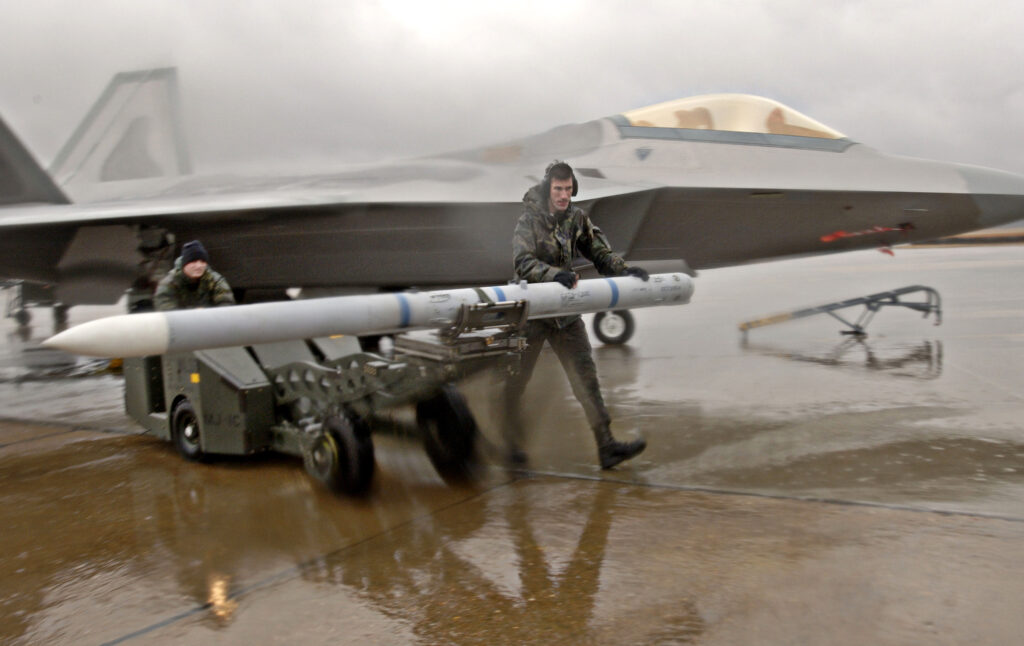
Air-to-air missiles, like any piece of military hardware, roll off the assembly line with a clear expiration date. This service life is determined based on a number of factors: primarily the anticipated lifespans of the solid-fuel rocket propellant used in the missile’s engines and the lifespan of the onboard battery responsible for powering the missile’s guidance systems and control surfaces.
These expiration dates can be superseded through pricey service-life extension programs, which are common practice for missile systems that are no longer in production and without a viable replacement. One such example is America’s arsenal of LGM-30 Minuteman III ICBMs, which entered service in 1970 with an intended 10-year lifespan, but have now eclipsed the half-century mark thanks to repeated update efforts.
But when it comes to in-production missiles like the Sidewinder or AMRAAM, these expiration dates are a bit more hard and fast. Most modern missiles are delivered with a projected 10- or 20-year shelf life, which marks a significant improvement over earlier-generation weapons, but can still become a serious concern for a military as large as the American. The U.S. needs to maintain sufficient weapon stockpiles to ensure it can defend itself and its allies at any given time, but every weapon delivery begins a rolling countdown to its expiration date, requiring a near-constant supply of replacements for the oldest weapons in the stockpile.
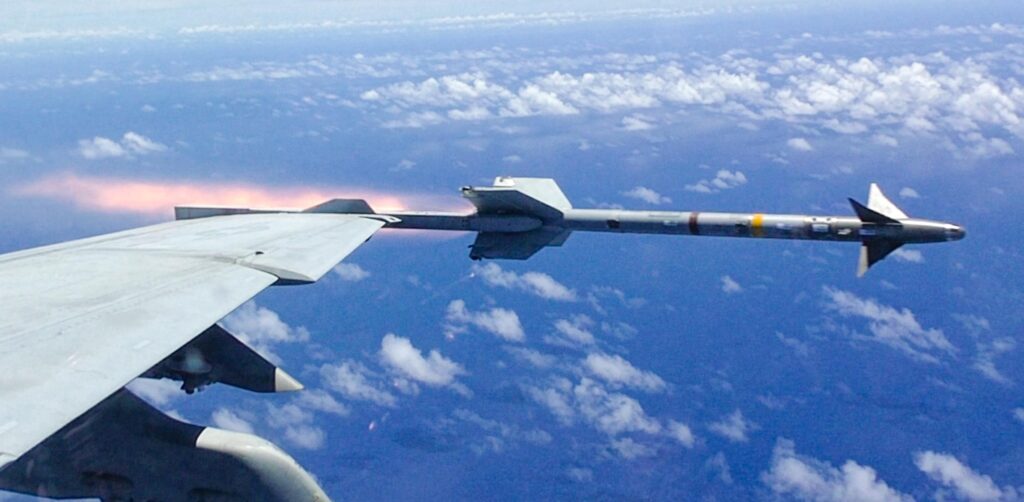
The AIM-9X Sidewinder missile, for instance, has a projected 20-year lifespan, and America first started taking delivery of low-rate initial production AIM-9Xs in 2000. That means that any of the first deliveries of these missiles that haven’t already been expended aged out of service and had to be decommissioned. In a real way, missiles are a “use it or lose it” kind of commodity.
But it’s also important to consider a missile’s “air hour” lifespan – or the number of hours a missile can survive the rigors of being strapped to a high-performance fighter and suffering rapid temperature changes, high-G maneuvers, and the shock and vibrations inherent to standard military operations. Disclosed figures for the Sidewinder and AMRAAM’s air hour lifespan are not publicly available, but on older weapons, it wasn’t unusual for the air hour lifespan to be as little as 50 or 80 hours.
In other words, missiles don’t last forever and it simply wouldn’t make a great deal of sense for pilots, in the midst of complex air operations, to be worrying about the budget when picking which weapon to leverage for an engagement.
Every flight that missile takes is one closer to it getting decommissioned, so you might as well use it for what it was made for.
Read more from Sandboxx News
- China presents an ‘urgent challenge’ Pentagon’s new weapons of mass destruction strategy says
- Commando jet skis and missiles: How Ukraine is ramping up pressure on Crimea
- SOCOM’s potential new firearm is a revolution
- An Israeli F-35 just took down a cruise missile mid-flight
- A Filipino attack jet reportedly beat the F-22 in air combat exercises
